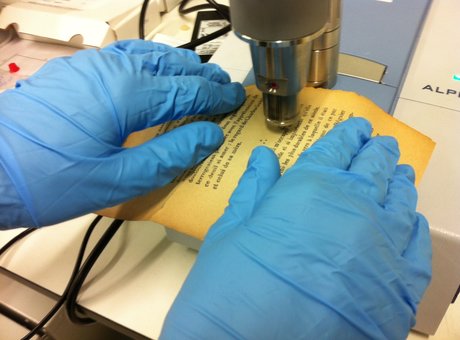Material properties of historic parchment: A reference collection survey

1 January 2014
Historic parchment is a complex biological material, and due to various methods of production or inks used, unknown environmental histories of objects and heterogeneous nature of animal skin, it represents a particular analytical challenge. Due to the number of variables it is likely that patterns in degradation of these historic objects can only be revealed by surveying the material properties of a significant number of real objects. In this work, a sacrificial collection of ca. 100 historic parchments (fifteenth to twentieth century) was characterized using a range of techniques available to conservation practitioners that can usefully be used to reliably and rapidly characterize parchment. We focused on micro-destructive methods, such as shrinkage temperature (Ts), as the most widely used indicator of parchment degradation. Lipid content, roughness, and ink pH were additionally measured, while a limited number of samples containing iron gall ink were also examined using scanning electron microscopy (SEM) and SEM-EDX, to explore the distribution of ink components. Even in the absence of detailed environmental histories, it is possible to acknowledge the significance of the effect of iron gall ink and its acidity, and of lipids on parchment degradation, as measured using Ts. This research reports valuable reference data, while the collection remains accessible for further research.
Material properties of historic parchment: A reference collection survey. Studies in Conservation, 59 (3), 136-149.
Možir, A., Cigić, I.K., Marinšek, M., Strlič, M. (2014)
The full text of this article is not available through UCL Discovery.
 Close
Close

